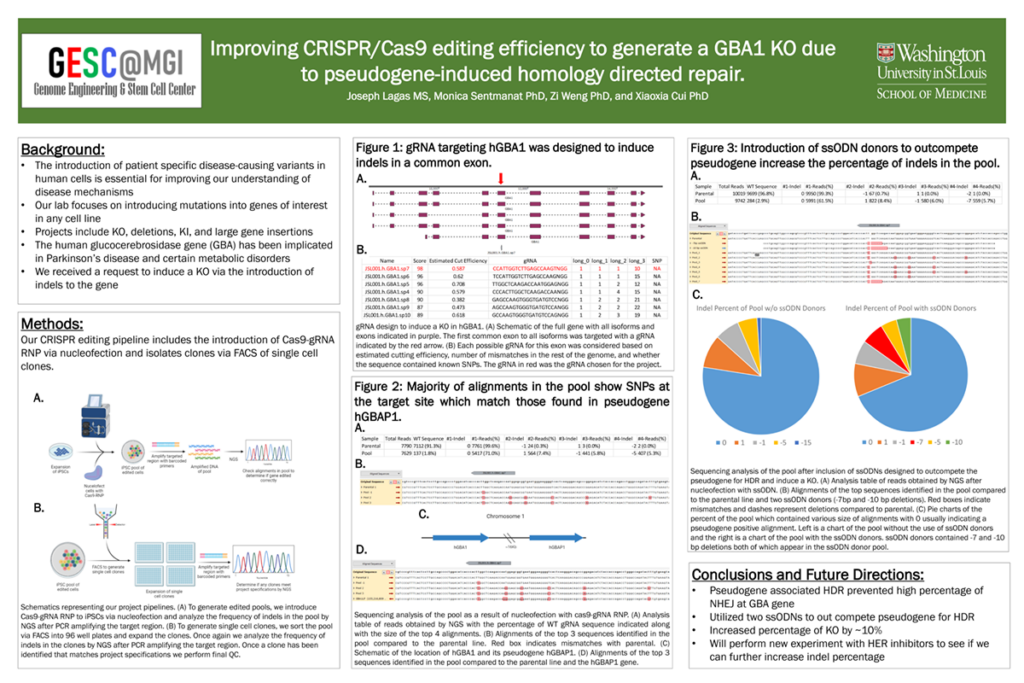
Introduction: The capability to translate research to the clinic is contingent upon the ability to study disease-causing mutations from patients in a cell type specific manner. This is most commonly accomplished through the introduction of these disease-causing mutations in induced pluripotent stem cells (iPSCs) and their subsequent differentiation. However, in certain cases, editing these genes can be complicated by the existing DNA repair mechanisms in human cells. The GESC received a request to induce a knock-out of the human beta-glucocerebrosidase gene (GBA), a gene with mutations commonly associated with Parkinson’s disease and Gaucher disease, in an iPSC line with CRISPR/Cas9.
Methods: gRNA-Cas9 RNP specifically targeting the gene was introduced by nucleofection and editing was analyzed in the pool via next generation sequencing of the targeted amplicon.
Results: While a high percentage of insertions or deletions (indels) was expected, we instead observed most alignments in the pool had no indels present. Instead, the majority of alignments displayed single base pair mismatches (SNPs) at the gRNA target and downstream of the site. These SNPs match mismatches that are commonly seen in a GBA pseudogene (GBAP) which is 16kb downstream of GBA. These genes frequently undergo homology directed repair (HDR) in human cells making the identification of new disease-causing mutations and the introduction of these mutations difficult. To outcompete the pseudogene for HDR at the target site, we designed two single stranded donor DNA sequences (ssODNs) containing 7 bp and 10 bp deletions and introduced them via nucleofections along with the RNP. The introduction of the ssODNs improved indel percentage of the pool by ~10% bringing the total percentage of indels in the pool above 25%.
Impact: This study provides a novel method to improve the introduction and study of disease-causing mutations in the GBA gene to human cells.
Organization: Washington University in St. Louis
Lagas JS, Sentmanat MF, Wang ZT, Cui X